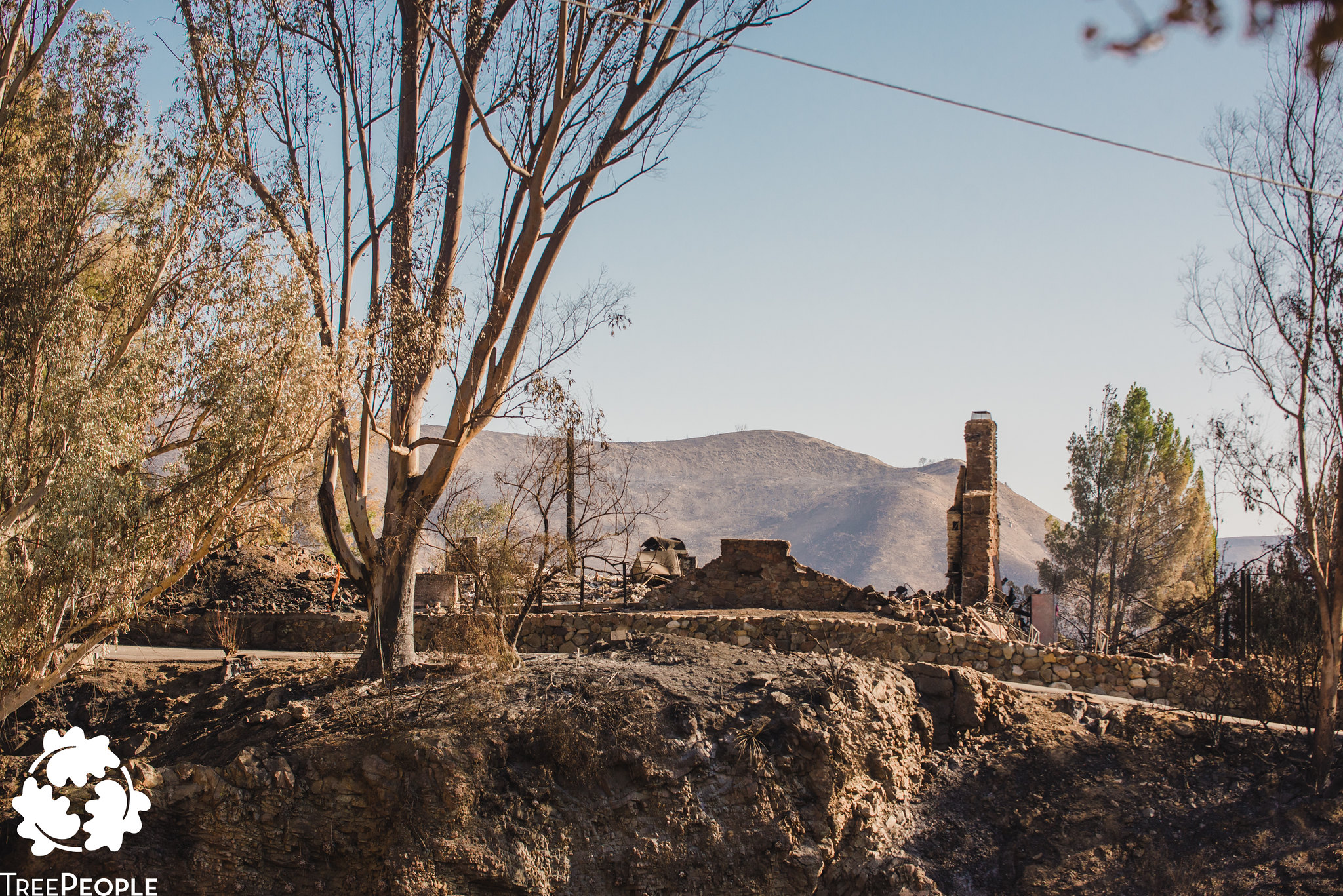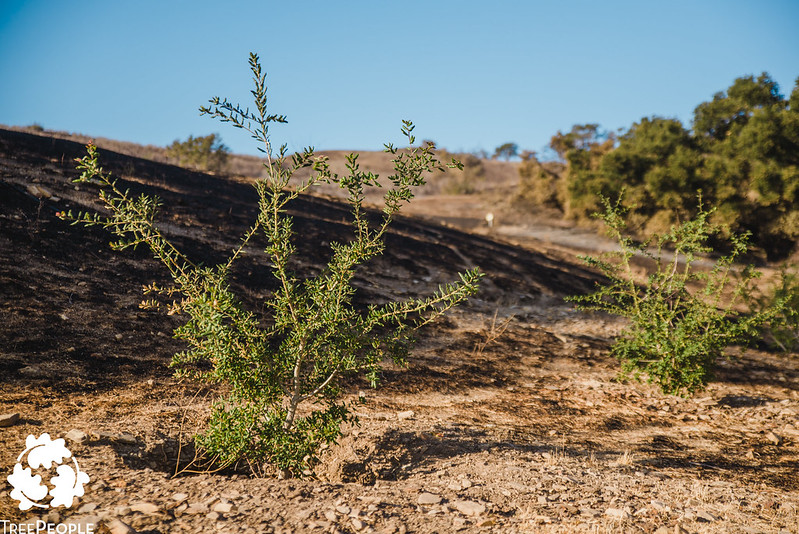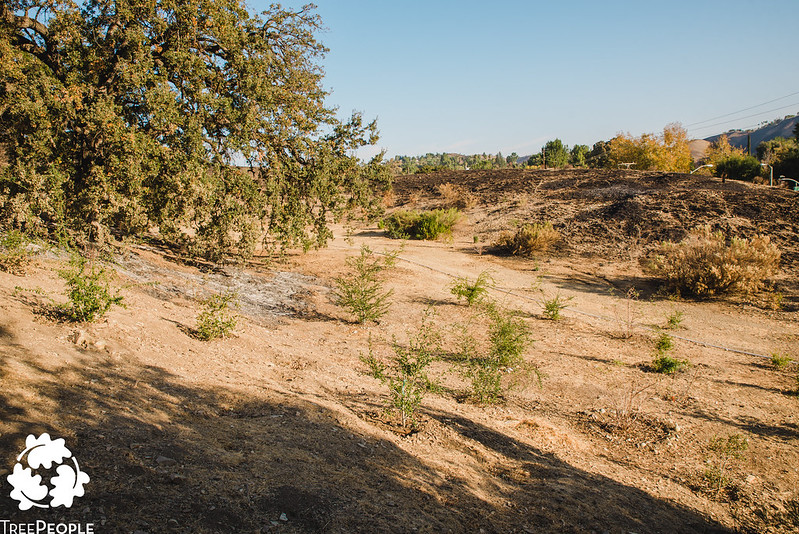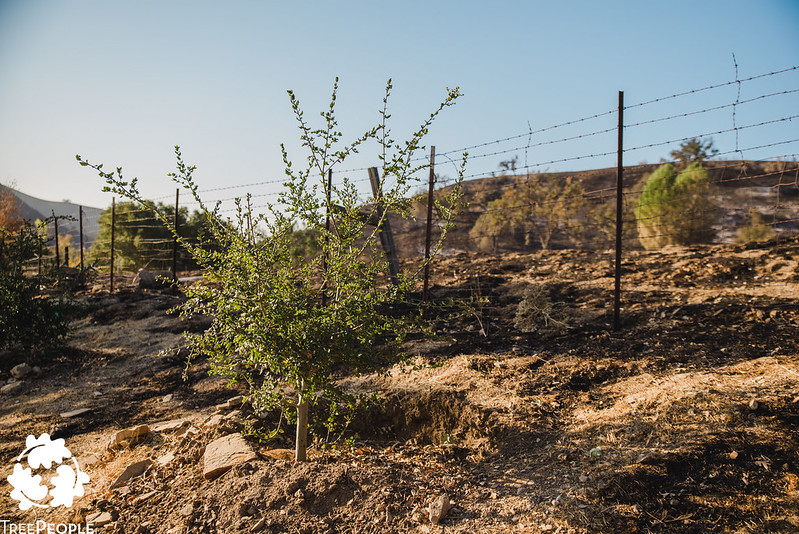TreePeople has launched the Emergency Fire Recovery Fund: a fundraising initiative that will be used to restore the landscapes of the surrounding mountains affected by wildfires that have ravaged Southern California. In the wake of the Saddleridge, Palisades, Tick, Getty, Easy, and Maria fires, our work as protectors and restorers of these delicate ecosystems is more important than ever.
Our generous board has dedicated $100,000 to MATCH any donations in order to protect these lands vulnerable to fires.
In 2018, California experienced its deadliest fire season in history, and this year we’ve experienced constant reminders of just how vulnerable our forests are to climate change. So far this year, California alone watched almost 200,000 acres of wildlands burn.
While so many acres burned in the 2018 fires, many of our planting sites were mostly unharmed. Invasive grasses burned to ash and trees and shrubs that you helped us plant survived because of our science-based efforts to create brush-free, fire-resilient planting sites.
Fueled by extreme heat, prolonged droughts and gusty winds, and the death and destruction caused by wildfires, TreePeople has become more determined than ever to implement our solutions for climate and fire resilience. We cannot afford to lose any more lives, communities, wildlife, or a single acre of our precious forests.
As TreePeople is a secondary responder that will be tasked to help nature heal itself, all of the donations we receive from the Emergency Fire Relief Fund will be used for:
- Planting native trees and plants, removing invasive flash fuels from planting sites, and restoring fire-scarred wilderness.
- Basic items for on-the-ground-restoration, like tools, wheelbarrows, hardhats, and gloves.
- Science-based research that will help us better understand how destructive wildfires can be contained – research that can be used throughout the world for wildlife prevention and restoration.
Since the wildfires started, TreePeople has received many calls from people who wanted to do something, anything, to help. Our precious mountains and impacted communities will need you more than ever before…and we invite you to rise to the challenge.
So what do we do now? Well, the real question to ask is, “what would nature do?”
She would start with the Roots. Go Native. Take the Long View.
Start with the Roots
After a burn, the land may look like a moonscape on the surface, but we have to consider what’s going on underground. From observation, we learn that chaparral burn quickly but the roots are still alive. For one to two years after a burn, we study what native plants will grow, and thus create shade for the ground, fix the soil and provide food for pollinators like bees and other insects. Seeds that have been stored in the soil over time, sometimes even from 100 years ago, are waiting for sunshine, smoke, ash, or water to stimulate their growth.
Go Native
In fire damaged areas, we remove competition from invasive plants and see if the ecosystem has a robust response. If the area is so damaged that it doesn’t respond, we then look at what has historically grown in that particular site. To give the whole ecosystem a boost we’ll plant native annuals, grasses, chaparral, and trees. In some cases, we collect seeds on-site and grow seedlings at our greenhouse in TreePeople’s nursery to be planted on-site.
Take the Long View
As Cody Chappel, TreePeople Wildlands Restoration Manager, explains, “Immediately after a wildfire, there’s an emotional public demand for action; and we begin to assess, evaluate and surgically plan towards recovery and resilience . We don’t want to stampede into a fragile area and stomp around where amazing unseen processes are at work. For instance, the U.S. Forest Service typically waits a year to observe the response of the ecosystem. We are ready to continue our ongoing restoration jobs. Ultimately, Mother Nature decides what survives where.”
To better understand our process, take a look at our photos of our surviving saplings in the aftermath of the Malibu Woolsey fire and our thriving trees throughout L.A. from previous plantings.





